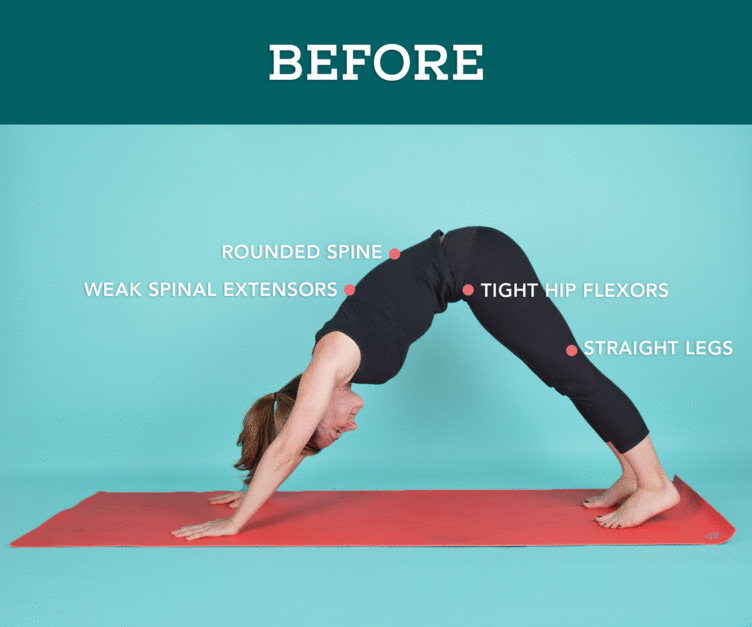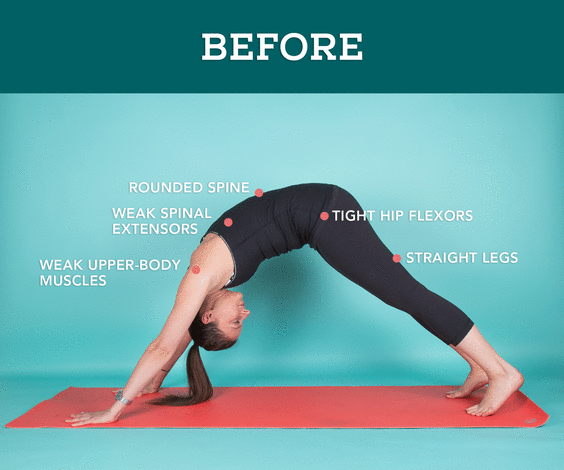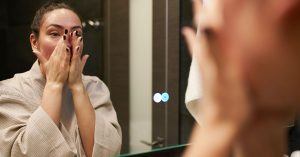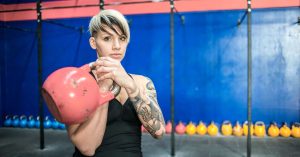Why Your Yoga Pose Will Never Look Like the Instructor’s (and That’s Good!)
You’re in yoga class and your favorite teacher is guiding you with crystal-clear instructions, but you can’t help it—you glance over your shoulder at the girl next to you to see how she’s doing triangle pose. You want to check that you’re doing it “right”… and, yes, see how you measure up (and how in the world can she get her hand all the way on the ground like that?!). Well, stop. The simple truth is that yoga poses look different on different bodies. And that’s OK. It needs to be OK, because pushing yourself into a shape that isn’t physically accessible to you can injure more than just your pride. From an anatomical standpoint, there are generally two reasons why your poses might never

You’re in yoga class and your favorite teacher is guiding you with crystal-clear instructions, but you can’t help it—you glance over your shoulder at the girl next to you to see how she’s doing triangle pose. You want to check that you’re doing it “right”… and, yes, see how you measure up (and how in the world can she get her hand all the way on the ground like that?!).
Well, stop. The simple truth is that yoga poses look different on different bodies. And that’s OK. It needs to be OK, because pushing yourself into a shape that isn’t physically accessible to you can injure more than just your pride.
From an anatomical standpoint, there are generally two reasons why your poses might never look exactly “perfect:” muscular constraints and skeletal limitations. Having either (or both) doesn’t mean anything is “wrong” with you. Yoga is about meeting your body where it is—without judgment—and growing from there. The key is that “growing” can mean moving deeper into a pose, or it can mean the ability to be perfectly at peace with staying where you are. With this article, perhaps you can start to see your practice from a different angle: Not “How deep can I go?” but “Where is it best for me to be?”
Muscular Constraints
 When certain muscles that are key to perform a pose are too weak or too tight, they can call on adjacent joints and muscles to get you into the pose—potentially in unsafe ways.
When certain muscles that are key to perform a pose are too weak or too tight, they can call on adjacent joints and muscles to get you into the pose—potentially in unsafe ways.
For example, the trouble with doing a “perfect” downward facing dog is many of us have tight hamstrings and psoas muscles, and weak quadriceps and spinal extensors. As we try to force our heels to the floor, our lumbar (lower) spine rounds (see the “before” photo above). For some reason, getting our heels to the ground has become the aim of this pose instead of elongation of the spine, which provides all those awesome benefits listed above. Once you have a nice long spine, by all means add the delicious hamstring stretch that comes with descending the heels to the floor—but don’t do this in sacrifice of the alignment of the spine.
Also, if our shoulder extensor muscles are tight, our shoulder external rotators are weak, and the scapulohumeral rhythm (the way the bones of the shoulder, upper arm, and thorax talk to each other to lift your arm in the most stable way) is not functioning appropriately, you experience “neck clog”: The shoulders scrunch up toward the ears, the elbows wind out to the sides, and we all but lose the efficacy of the pose.
When down dog is practiced with good alignment (as in the photo on the “with adjustments” above), you’ll see your spine’s four natural curves. The fingers and palms root down evenly into the floor, your shoulders line up with your ears, the insides of your elbows are at about a 45-degree angle to the ceiling, and your legs help draw your pelvis away from your head.
Performed this way, the pose has many incredible benefits for the spine, including strengthening the spinal extensor muscles (those ones that keep us standing up straight), creating much-needed space between the discs, and generally counteracting the effects of sitting behind a desk hunched over a keyboard for hours five days a week.
The good news is these restrictions will ease up with mindful practice, and a trusted teacher can help you arrive at a version of down dog—or any other pose that tight or weak muscles make difficult for you—that honors what your body is capable of right now (see the “with adjustments” photos above and below). With careful observance of alignment and the correct use of specific muscles, you can achieve shapes faster than you imagine, all without injury.
Skeletal Limitations
We truly are all built differently, and these subtle variations influence the way each body can move.
Skeletal limitations are another factor that must be considered when practicing yoga. We truly are all built slightly differently when it comes to our bones, and these subtle physical variations influence the way each body is capable of moving.
Take malasana, or garland pose, for example. How easy you come to the humble yogi squat can depend on the shape of your hip joints, which are composed of a socket in the pelvis (the acetabulum) and a ball (the protruding noble at the top of your thigh bone known as the femoral head).
The location of the socket on the pelvis and mechanics of the ball will determine whether you sit low quite happily, or you sweat bullets to barely lower yourself, knees collapsing inward, feeling a sensation of “stuckness” rather than the satisfying stretch you see others enjoying.
While no amount of pushing or struggling will get you closer to the ground, that doesn’t mean that you can’t find some form of balance and flexibility in the pose—even if it requires the use of an artfully placed block or two. (Now you know what those are for!)
As with your muscles, any skeletal restrictions should be respected, so adopt variations of poses as needed to care for the integrity of your personal practice. Seeking the help of an experienced teacher will allow you to explore the pose in a way that is challenging while still safe for your body.
The Yoga of It All
 As the ancient yogic text, the Bhagavad Gita, reminds us:
As the ancient yogic text, the Bhagavad Gita, reminds us:
“It is better to strive in one’s own dharma [your essential nature] than to succeed in the dharma of another. Nothing is ever lost in following one’s own dharma, but competition in another’s dharma breeds fear and insecurity.”
Yoga is about consciousness and presence. To really practice yoga is to be fully accepting of where you are, muscular and skeletal restrictions and all, so be present for the uniqueness of your journey and all it has to teach you. If that means modifying a pose or use a block or strap, that’s what’s right for you. Try to stop looking over your shoulder at your neighbor’s body and start focusing on the only one that matters right now: the one you live in.
Nicole Katz is the New York City-based owner of and teacher at Yoga 216, New York’s only semi-private yoga studio. We believe yoga is personal! Yoga 216’s namesake is Yoga Sutra 2:16, which translates to: “Pain that has not yet come is avoidable.” Nicole and the team of wellness professionals at 216 are dedicated to helping each client avoid pain, get stronger, and live a healthier, happier life using all of the tools that a customized yoga practice has to offer. Follow us at yoga216.com, and on Facebook, Instagram, and Twitter.
SOURCE: Greatist RSS – Read entire story here.








